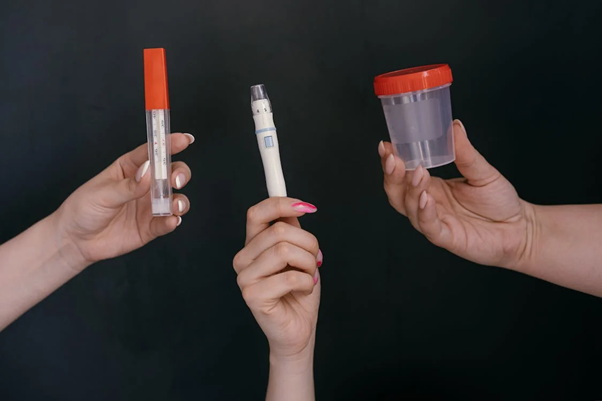Many might not have heard about the condition, and often we tend to avoid talking about it because it makes us feel different and uncomfortable. Yet, urinary incontinence, or the involuntary leaking of urine, does tend to make day-to-day activities harder. Millions across the globe suffer from the same condition, and essentially, you’re never alone yet it still decreases your overall quality of life and makes it harder to navigate your daily activities. Thankfully, modern medicine has come a long way and we now possess a better understanding and knowledge of the condition and therefore can provide some tips on how to treat and control it. With the appropriate strategies, you can live like everyone else, and in the text below, we’ll share some tips and advice on the matter for a better and more comprehensive understanding of the matter.
Understanding the Condition
As said, we’ve come a long way in treating difficult conditions and making sure those conditions are kept under control with the proper medication and effective strategies. This is all due to a better understanding of the condition itself, which begs the question of what urinary incontinence is. We mentioned how it’s the involuntary leaking of urine, but of course, there is more to it than meets the eye. Urinary incontinence can be categorized into several types, including stress incontinence, urge incontinence, overflow incontinence, and functional incontinence. Each of these has a different cause, so the treatment depends on the specific type of condition. In the case of stress incontinence, physical activities such as sneezing or coughing might cause a reaction or leak of urine. It’s due to the sudden muscle spasm and can often be held at bay with proper medication. Overflow incontinence is usually related to improper emptying of the bladder. So, each of these requires a different treatment and approach.
Seeking Medical Advice
Your doctor’s office is a safe place where you can openly discuss your condition without feeling embarrassed because of it. The best way to determine what’s going on with your body is to seek the help of a medical professional. And don’t worry, they’ve seen it all and heard it all and you can speak freely about the condition. Besides, a thorough medical examination allows you to determine the underlying causes and makes it easier to find the appropriate approach to treating it. We’ll talk about the many treatment options a bit later, but for now, let’s just clear something out. You’ll need to seek medical care and advice, don’t push it under the rug, and don’t try to simply “wait it out”, as it might not go away on its own.
Dietary and Lifestyle Modification
A lack of physical activity often means our muscles are in a state of hibernation, and we’re putting just a bit of stress on them with our daily activities. This can cause a lack of muscle stability and strength over time, especially if you happen to be overweight, as it weakens the bladder while maintaining a healthy weight can decrease the pressure on your bladder. Other lifestyle choices affecting the condition directly or indirectly are smoking and excessive drinking. Caffeine is putting stress on the kidneys, it’s a natural diuretic and makes you go to the toilet more often. Alcohol affects your body differently but still, it increases your physiological needs. Quitting smoking reduces coughing, which can exacerbate stress incontinence. Of course, staying hydrated is important but avoid excessive fluid intake, and remember that you can hydrate yourself by taking in a proper ratio of liquid to minerals and vitamins, as just plain water in huge amounts dilutes your sodium levels while enhancing the urge to go to the bathroom often.
Alternative Treatments and Solutions
Besides the Kegel exercises we mentioned and some lifestyle choices and changes, you might opt for some non-traditional and non-invasive procedures that might help you reduce the stress on your bladder and make it possible to live a normal life. A new and daring approach is high-intensity focused electromagnetic technology that stimulates the pelvic floor muscles and induces thousands of small contractions. We’re talking about EMSella chair sessions, a new and revolutionary treatment idea that has helped many patients suffering from the condition. The session typically lasts around 30 minutes, not more, and during it, you remain fully clothed and comfortably seated. And if you’re asking, the procedure is completely pain-free and patients are reporting a nautical difference only after a few sessions.
Pelvic Floor Exercises
The most commonly accepted assumption of the reason why the condition is occurring is a lack of proper muscle stability and strength. Once again, it does depend on the type of incontinence but in most cases, Kegel exercises have proven to be extremely effective in treating the condition. These exercises have proven to be beneficial for both men and women and are a prescribed treatment in the majority of cases and that’s simply due to their effectiveness in strengthening the pelvic floor muscles. The idea is to repeat the exercise several times a day and it should teach your bladder some control. Like with everything, consistency is the key. As you can imagine, you’ll need to repeat this quite often, and you’ll need to make sure to stay consistent, as it sometimes takes months for the muscles to strengthen and become flexible enough. Thankfully, the exercises themselves only take a few minutes and don’t require some complicated warm-up or even equipment.
Staying Active
It’s important to stay active and keep the same habits afterward. You’ll need to adhere to the doctor’s plan and their recommendation, keep track of your weight, and avoid all the bad habits we mentioned, from excessive alcohol consumption to too much coffee. It’s a long journey so be patient and take it slow.
Living with a condition sometimes seems like a curse and many are asking
[fbcomments url="" width="100%" count="on"]








